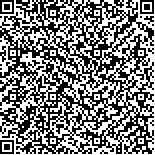施爱梅,郑琦,柏和风,等.骨盆辅助式康复机器人联合重复经颅磁刺激对脑卒中后偏瘫患者下肢功能的影响[J].中华物理医学与康复杂志,2021,43(8):712-716
扫码阅读全文

|
| 骨盆辅助式康复机器人联合重复经颅磁刺激对脑卒中后偏瘫患者下肢功能的影响 |
|
| |
| DOI:10.3760/cma.j.issn.0254-1424.2021.08.010 |
| 中文关键词: 经颅磁刺激 康复机器人 脑卒中 运动功能 |
| 英文关键词: Transcranial magnetic stimulation Robot-assisted training Stroke Motor functioning Walking |
| 基金项目:浙江省医药卫生科技计划项目(2020KY954) |
|
| 摘要点击次数: 5529 |
| 全文下载次数: 6268 |
| 中文摘要: |
| 目的 观察骨盆辅助式康复机器人联合重复经颅磁刺激对脑卒中后偏瘫患者下肢功能的影响。 方法 采用随机数字表法将40例脑卒中后偏瘫患者分为对照组(20例)和实验组(20例),2组均给予常规康复训练和康复机器人训练,实验组在此基础上辅以重复经颅磁刺激仪,刺激部位为健侧第一躯体皮质运动区(M1),频率1.0 Hz,强度80%静息运动阈值,连续刺激20 min,刺激时间5 s,间隔时间5 s,每次予以600个脉冲刺激,每周5次,连续治疗8周。于治疗前和治疗8周后(治疗后)采用简式Fugl-Meyer运动量表下肢部分(下肢FMA评分)、Berg平衡量表(Berg评分)和Holden步行功能分级量表(Holden分级)评定2组患者的下肢运动功能、平衡功能和步行能力。 结果 治疗后,2组患者的下肢FMA评分、Berg评分和Holden分级均较组内治疗前均显著改善,差异均有统计学意义(P<0.05),且实验组的下肢FMA评分、Berg评分和Holden分级分别(22.05±2.93)分、(39.15±2.68)分和(3.45±0.83)级,明显优于对照组治疗后,差异均有统计学意义(P<0.05)。 结论 骨盆辅助式康复机器人联合重复经颅磁刺激可有效地改善脑卒中偏瘫患者的下肢运动功能,提高其平衡功能和步行能力。 |
| 英文摘要: |
| Objective To explore the effect of robot-assisted training and repetitive transcranial magnetic stimulation (rTMS) on the lower limb function of hemiplegic stroke survivors. Methods Forty hemiplegic stroke patients were randomly divided into a treatment group (n=20) and a control group (n=20). Both groups were given routine rehabilitation training and robot-assisted walking training, but the treatment group was additionally treated with rTMS at 1Hz applied to the primary motor cortex M1 area at an intensity of 80% of the resting motor threshold. The stimulation time was 5 seconds at 5-second intervals, 600 pulses each time, five times a week for 8 weeks. Lower limb motor function, balance and walking function were assessed before and after the intervention using the Fugl-Meyer assessment for the lower extremities, the Berg balance scale and the Holden walking function scale. Results There was no significant difference between the two groups in any measurement before the training, but after the intervention all of the measurements had improved significantly in both groups, with the average Fugl-Meyer score, Berg score and Holden grading significantly better in the treatment group. Conclusion Repetitive transcranial magnetic stimulation can improve the effectiveness of robot-assisted walking training in improving lower limb motor function, balance and walking after a stroke. |
|
查看全文
查看/发表评论 下载PDF阅读器 |
| 关闭 |